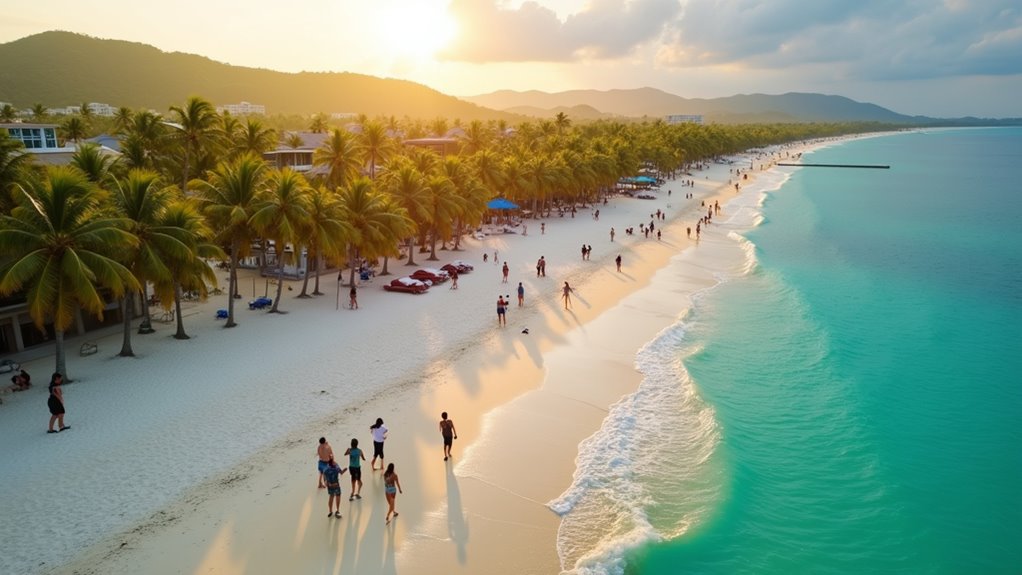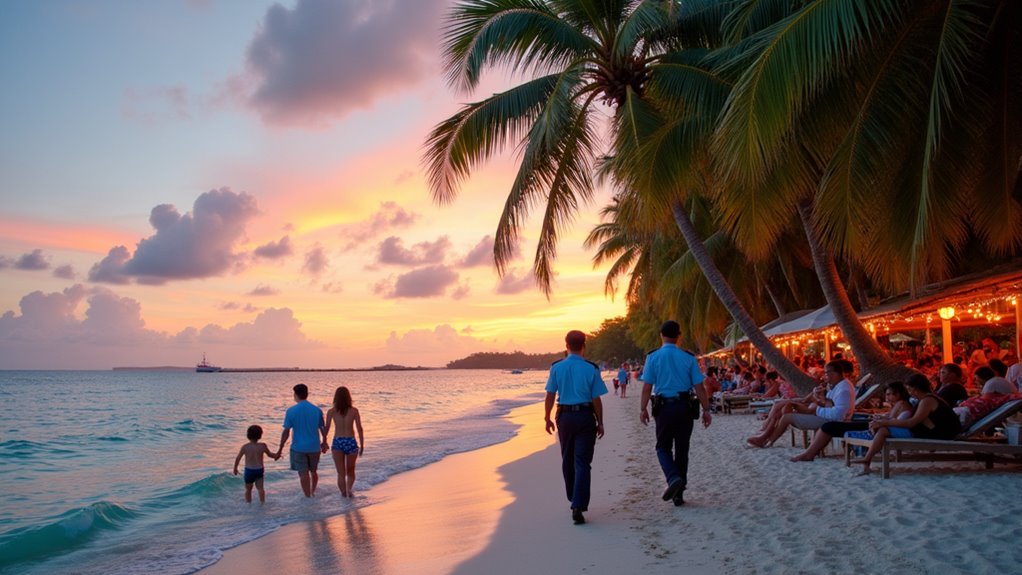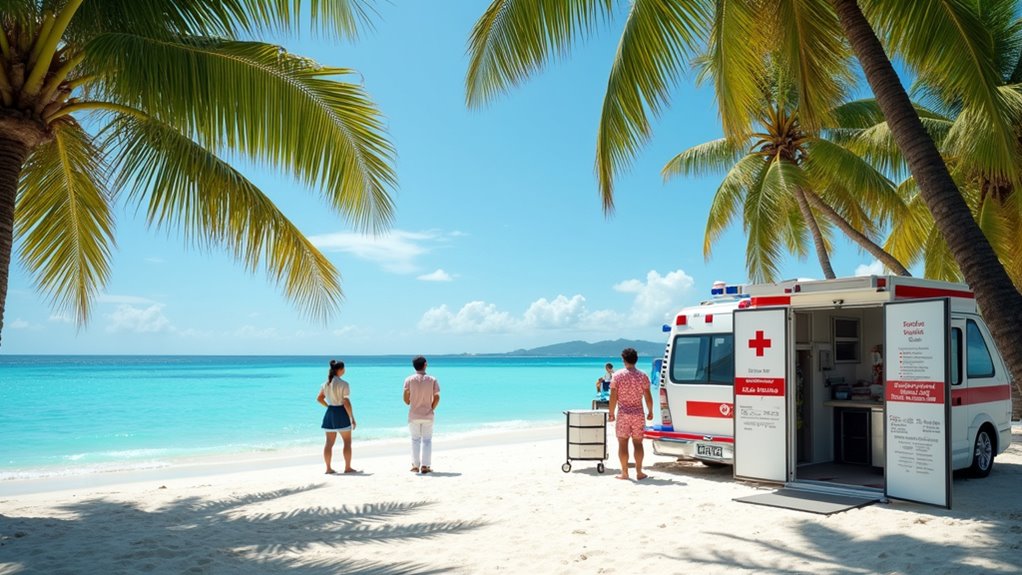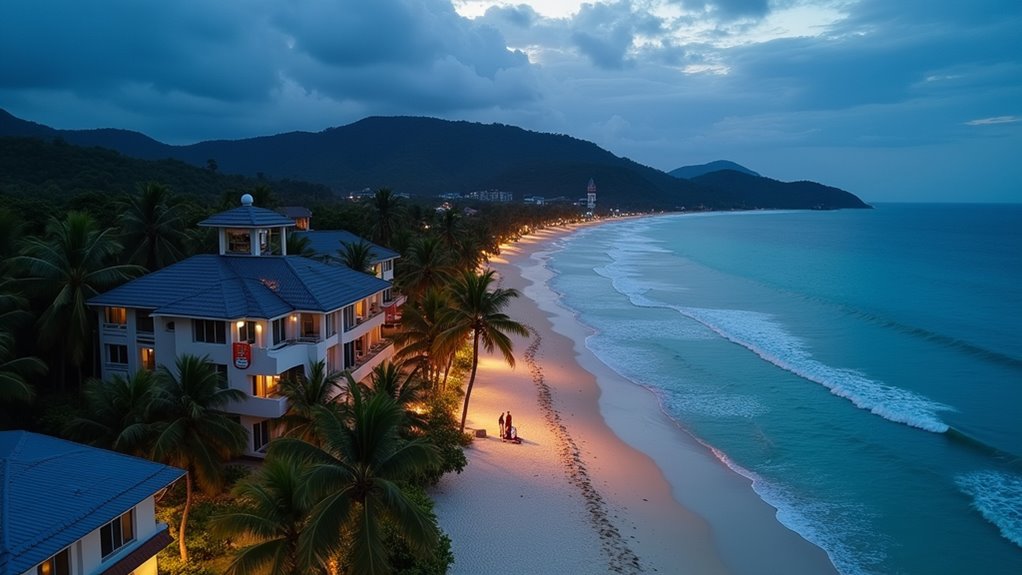Physical Address
304 North Cardinal St.
Dorchester Center, MA 02124
Physical Address
304 North Cardinal St.
Dorchester Center, MA 02124

Paradise awaits in Boracay, but savvy travelers should know these essential safety tips before packing their bags.
Boracay is generally safe for travelers, with high safety ratings particularly during daylight hours. You’ll face minimal risk of violent crime, though petty theft can occur in crowded areas. The island has limited medical facilities, so travel insurance is essential. Beach safety varies, with lifeguards at popular spots like White Beach. Watch for flooding during rainy seasons and follow local typhoon warnings. The following guide covers everything you need for a secure island experience.

While Boracay remains one of the Philippines’ premier tourist destinations, understanding its safety landscape is essential for any visitor. The island enjoys high safety ratings, with 87.5% of people feeling safe walking alone during daylight and 70.83% at night.
Boracay’s enviable safety record makes it a welcoming paradise, with most visitors feeling secure both day and night.
Violent crimes like assault and armed robbery are relatively rare (25% perception rate), though you should be aware of corruption issues (62.5%) and moderate drug-related concerns (41.67%).
Recent incidents, including a case involving a Slovak tourist, have prompted enhanced security measures. Local authorities maintain these are isolated events and have activated incident management teams focusing on tourist safety, medical preparedness, and waste management.
Before visiting, prepare to show proof of accommodation at an accredited hotel, as this may be required for island entry. Be cautious when engaging in water activities as the coastal waters around the Philippines pose drowning risks due to riptides and sometimes inadequate lifeguard coverage.
Despite Boracay’s reputation as a safe destination, travelers should remain vigilant about specific crime concerns that may affect their stay. Theft and property crimes remain low (29.17), but you’ll want to stay aware of your belongings in crowded areas.
Corruption scores higher (62.50) than violent crimes (25.00) or muggings (33.33). Car theft is extremely rare (8.33). Walking alone during the day is considered very safe with an impressive safety rating of 87.50.
While crime has moderately increased over five years, the Philippines reported an 18.4% decrease in overall crime in early 2025.
For maximum safety, stick to well-lit areas, use reputable transportation, and maintain awareness of your surroundings. Local businesses actively partner with authorities, and police presence has been enhanced with specialized officers, including Korean-speaking personnel to assist international visitors.

Beyond personal safety concerns, understanding Boracay’s healthcare landscape is a key part of trip planning. The island offers both public and private medical facilities, but with significant limitations you should be aware of.
To fully enjoy Boracay’s stunning beaches, you’ll need to understand the water safety measures that protect visitors from potential hazards. Popular areas like White Beach have trained lifeguards monitoring swimmers, but smaller beaches may lack this service. Always swim near lifeguard stations for prompt assistance if needed.
Protect yourself from marine hazards by wearing water shoes to avoid injuries from sea urchins and coral fragments. Don’t touch marine life, even if it appears harmless.
Heed local advisories about water quality, particularly in areas like Bulabog Bay where pollution concerns exist.
Be aware that rare wildlife encounters, including saltwater crocodile sightings, have prompted safety protocols. Authorities monitor these situations and may issue warnings or beach closures.
Follow official guidance and posted signage for a safe experience. Watch for signs of rip currents such as gaps in waves or unusually calm patches of water that could quickly pull swimmers away from shore.

While beach safety focuses on immediate water dangers, Boracay’s island location exposes visitors to broader natural hazards requiring preparation. The island faces several environmental threats you should be aware of during your stay:
Environmental concerns have escalated due to waste management failures that contribute to flooding when drainage systems become clogged with trash.
Always check weather forecasts and follow official guidance during your visit.
Before planning your trip to Boracay, you’ll need to familiarize yourself with current travel advisories and security information that could impact your stay. The U.S. Department of State advises increased caution when traveling to the Philippines due to civil unrest, though Boracay itself isn’t directly affected by the warnings specific to Mindanao.
Stay informed on Philippines travel advisories before visiting Boracay, as caution is recommended despite the island being away from troubled regions.
You must have proof of accommodation in an accredited hotel to enter Boracay. This requirement serves as both a regulatory measure and a security precaution. Recent infrastructure improvements have enhanced overall safety conditions for travelers across the island.
While on the island, utilize tourist police services and stay in accredited accommodations for enhanced safety.
Remember to enroll in the Smart Traveler Enrollment Program for alerts, carry essential documents, and purchase travel insurance covering medical evacuations.
Though petty theft can occur in crowded areas, Boracay maintains lower crime rates than larger Philippine cities.
You’ve now got the complete safety picture of Boracay. Like a well-built outrigger boat, your vacation will remain stable if you’re prepared for the occasional wave. Stay vigilant about personal belongings, respect ocean warnings, and keep emergency contacts handy. With common sense precautions, you’ll find Boracay isn’t just a paradise of white beaches—it’s also a destination where you can relax with confidence.